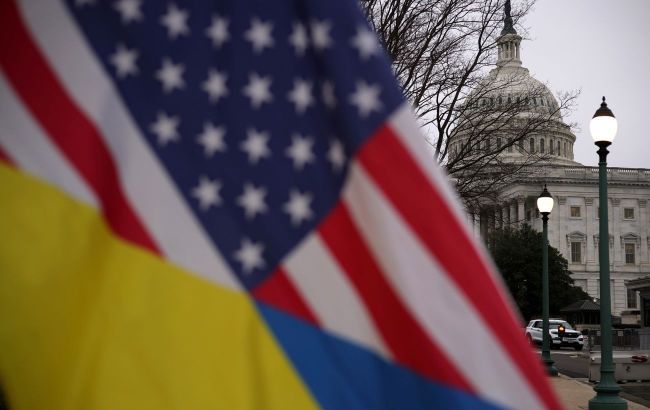Plan for $50 billion: US backs new idea to aid Ukraine, Bloomberg
 Illustrative photo (Photo: Getty Images)
Illustrative photo (Photo: Getty Images)
The United States supports the proposal to issue $50 billion in bonds for Ukraine using frozen Russian assets, according to Bloomberg.
The proposal entails pooling $280 billion worth of assets from the Russian central bank, which have been frozen by G7 countries and the European Union, into an SPV, with proceeds going towards so-called freedom bonds.
More than two-thirds of Russia's frozen assets are locked in the EU, where they generate approximately $3.6 billion in net profit annually.
The proceeds from the planned bond issuance nearly match the $60 billion in US aid still pending in Congress. Western nations are striving to secure funding for Ukraine at this critical juncture in the war, as the Ukrainian Armed Forces face artillery shortages and Russia achieves certain successes in the east.
Who might oppose
EU leaders meeting in Brussels on Thursday will discuss how to use the proceeds from frozen Russian assets to aid Ukraine. Discussions are in the early stages and ongoing. Some G7 countries, including Germany and France, have expressed caution about the new idea.
"The effort could generate much more than $50 billion, according to one person. Some EU countries, including Estonia, have urged allies to be bolder and seize the assets outright," the report says.
Differences within Europe
Previously, the G7 stated that assets would remain frozen until Russia agreed to compensate Ukraine for damages caused.
G7 allies have discussed several options for using frozen assets, including using the money as collateral to raise debt or issuing guarantees against frozen funds. However, differences persist among them due to Europe's reluctance to do anything that could be perceived as actual asset confiscation.
Countries fear potential legal challenges, jeopardizing the stability of the euro, and facing retaliatory measures from Russia.
US aims to maximize funds seized from Russia
EU leaders are nearing an agreement on using proceeds from blocked assets to finance Ukraine's military needs.
According to plans presented this week, the bulk of unforeseen revenues, mostly held through the Belgian clearinghouse Euroclear, will be transferred to the European Peace Fund.
This mechanism primarily serves to reimburse governments for military purchases directed to Ukraine.
"The US argument is to devise an option that maximizes the revenue generated by the frozen assets and anticipates the value of the windfall profits to get Ukraine more support quickly, according to the people," Bloomberg writes.
Utilizing Russian assets
At the end of February, European Commission President Ursula von der Leyen stated that it was time to start a conversation about using unforeseen income from frozen Russian assets for joint procurement of military equipment for Ukraine.
Under the EU proposal, the share of revenues received from February 15, as yet undetermined, will be transferred to the EU twice a year until sanctions are lifted. The funds will be directed to the European Peace Fund and the EU budget fund for Ukraine.
Yesterday, it was reported that the European Commission would announce proposals to use the proceeds from frozen Russian assets to finance arms supplies to Kyiv and stimulate the country's defense industry.

